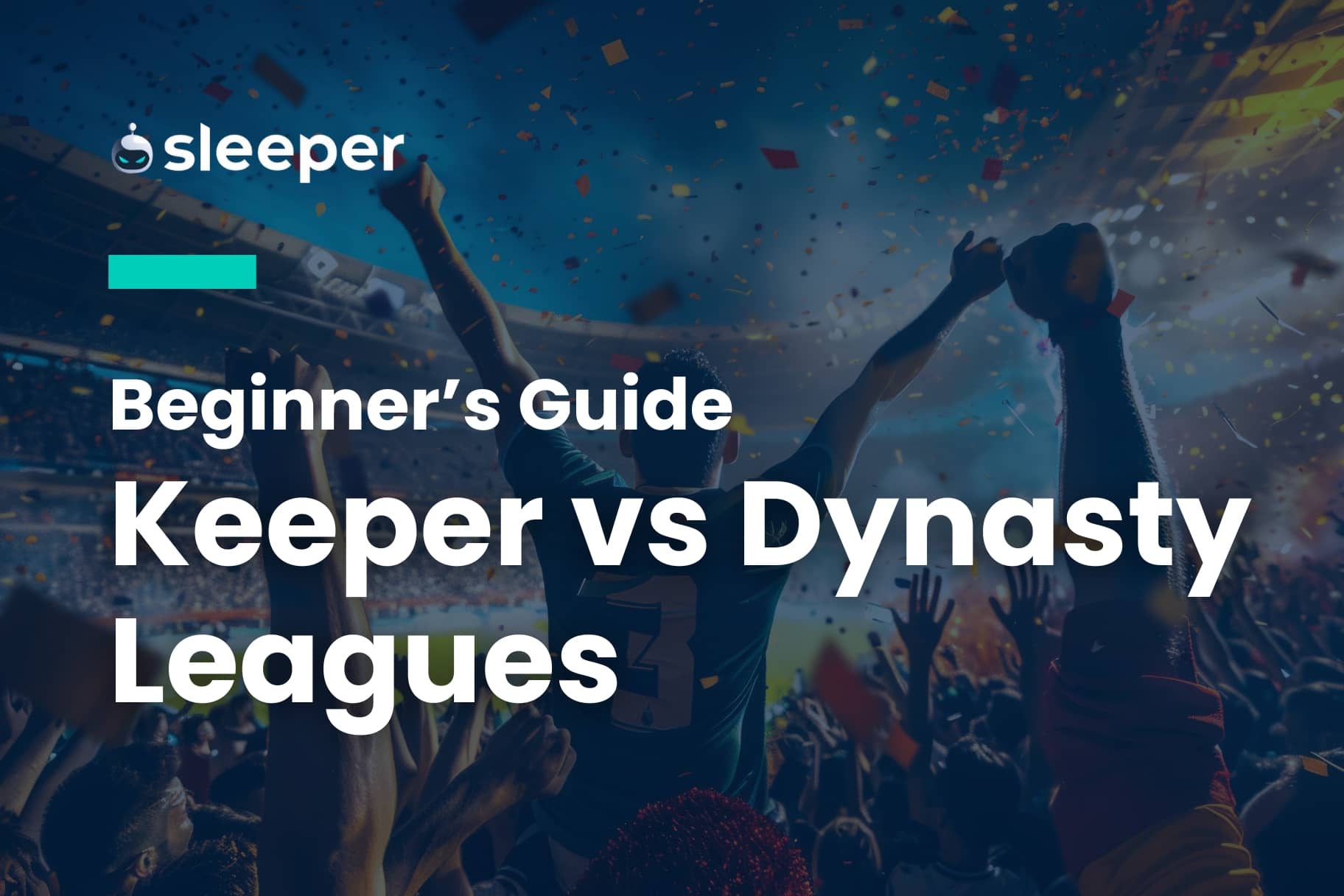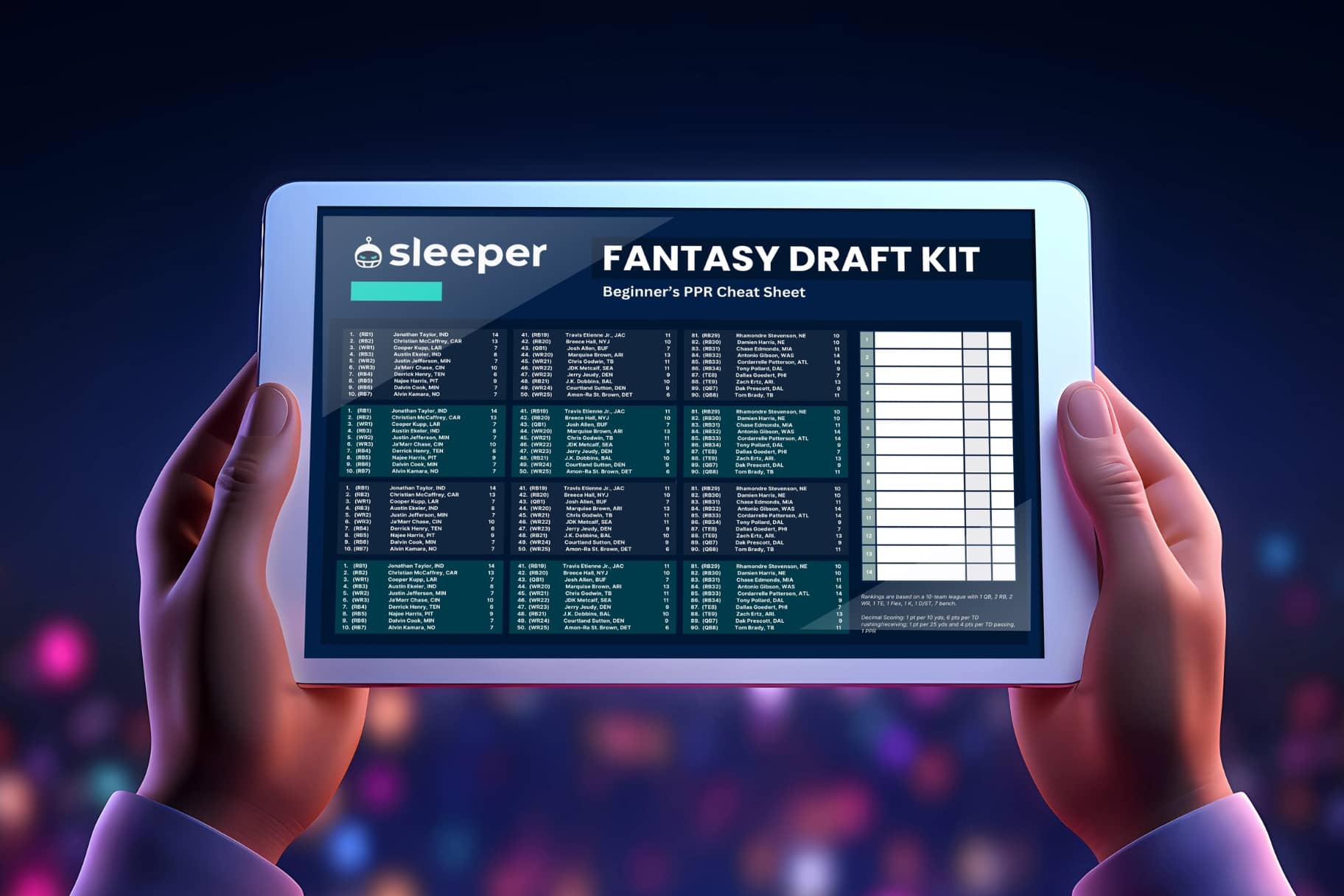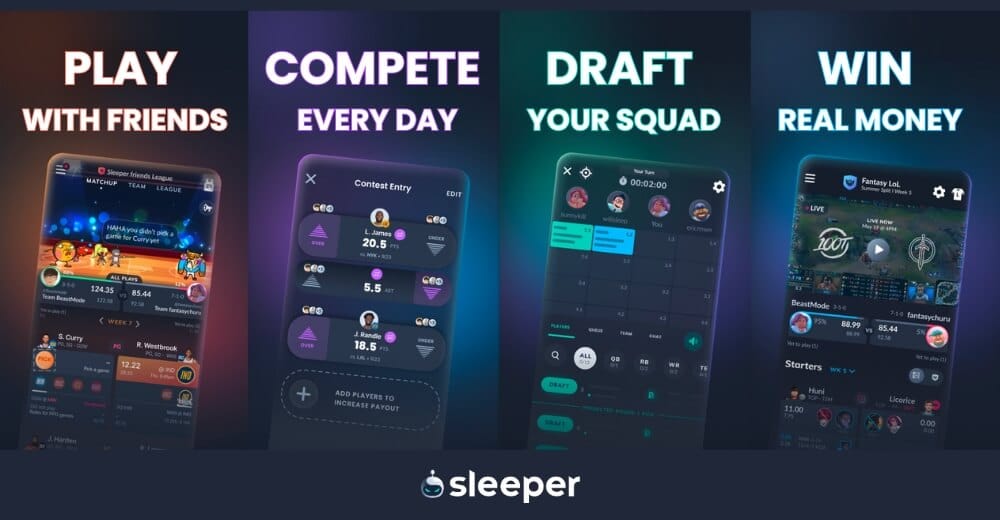Fantasy football enthusiasts should check out dynasty and keeper leagues, both of which add fun twists and new strategies onto traditional redraft leagues.

Redraft is the most common format of fantasy football, but that doesn’t mean it’s the best. Dynasty and keeper leagues are great options for fantasy managers prioritizing longer-term strategy and an emphasis on younger, breakout players.
Below, we’ll help you determine which league type is the best fit, based on your preferences.
Dynasty vs. Keeper Leagues: Main Differences
Let’s start with a basic definition of each league format before discussing the three key differences between dynasty and keeper leagues.
In a dynasty league, players stay on your fantasy team for as long as you want to have them, even for their entire careers. The primary way to add talent is through the annual rookie draft, but you can utilize the waiver wire and make trades year-round. Successful dynasty leagues can last a decade or longer, and fantasy managers form strong bonds with their leaguemates.
In a keeper league, fantasy managers keep a limited number of players after each season ends — usually two to five players. The remaining players are put back into the player pool, and a typical fantasy draft ensues before each season. Similar to dynasty leagues, the waiver wire and trades are additional ways to shake up your keeper league fantasy roster. As with dynasty, keeper leagues often last for many seasons.
Both formats differ from standard redraft fantasy football leagues due to their emphasis on year-to-year continuity. In fact, there is little point in playing keeper or dynasty if you aren’t willing to commit to year two and beyond.
Now, let’s discuss the three main differences between keeper vs. dynasty leagues.
Key Difference #1: Fantasy Draft Strategy
The initial draft strategy is quite different in a keeper league than in a dynasty league.
A keeper league’s Year 1 draft will look fairly similar to a standard redraft when comparing players’ ADP (average draft position). Every keeper league manager starts from scratch with the same goal: to win a fantasy championship that season. But rookie ADPs will be marginally elevated compared to redraft, as managers start thinking about next season’s potential keepers.
The inaugural draft for a dynasty league, on the other hand, will see a plethora of young players fly off the board in the early rounds.
An incoming rookie receiver with a lot of hype — like Chicago’s Rome Odunze in 2024 — will not project well in redraft or keeper league formats. But he’ll be a highly coveted asset in dynasty leagues because of his expectations from Year 2 onward. Dynasty managers push young players up the draft board, focusing on fantasy production two to five years out, if not longer.
Veteran standouts will go a lot later in dynasty leagues. For example, a wide receiver like Davante Adams will be off the board within the first two rounds of most 2024 keeper league drafts. In dynasty startups, Adams’ ADP on Sleeper is Round 6, since he turns 32 in December. A manager in a keeper (or redraft) league will highly value his 2024 projection, while a dynasty manager will be wary of a player who might have only one or two fantasy-relevant seasons left.

Key Difference #2: Long-Term Importance of Year 1 Draft
Sometimes, you leave a fantasy draft knowing it simply wasn’t your best work. Other times, you feel on top of the world, (possibly) overconfident that you’ve already won the league. In both dynasty and keeper leagues, the stakes are higher on the startup (Year 1) draft — which has implications beyond just one season — but to varying degrees.
Dynasty startup drafts are more impactful for a longer period than the inaugural keeper draft. If you draft a poor keeper team in Year 1, you’ll be redrafting the vast majority of your players in Year 2, making a turnaround more attainable.
However, a shaky dynasty startup draft is less forgiving, potentially hamstringing your team in Year 2, if not further. Drafting a strong dynasty team from the start can set you up for multiple seasons of success.

Pro Tip: If you’re a fantasy enthusiast looking to avoid being saddled for years with the consequences of one poor draft night, be sure to check out Sleeper Picks. Daily or weekly picking is a great way to leverage your NFL and player knowledge without being tied down to a season-long fantasy league.
Key Difference #3: The Role of Waivers
Keeper and dynasty leagues both have access to the waiver wire to inject player talent onto your roster. However, keeper leagues shut down the waiver wire in the offseason, just like a redraft league. You’ll have a hard time finding a keeper league that lets you scoop up a rookie in July based on training camp reports.
With dynasty leagues, the waiver wire is almost always open for business. There’s usually a brief period after the NFL Draft, and before the rookie draft, where waivers are closed — but the rest of the year is fair game. You can use your FAAB dollars to add a veteran running back in March who was recently signed by a high-powered offense. In a keeper league, you’d have to wait until the annual draft to select this veteran, probably by using a mid- to late-round pick instead.
Dynasty vs. Keeper: Which League Should You Choose?
No fantasy football format is best for everyone, and that’s part of the fun.
Dynasty leagues cater more towards year-round fantasy enthusiasts who dream of being an NFL GM. The time commitment throughout the year is more intensive, as you’ll need to pay closer attention to offseason events like NFL Free Agency and the NFL Draft. You’ll also reap bigger rewards when your evaluation of a young player is correct, since they’ll be on your fantasy team for their entire career.
Keeper leagues are a better fit for the seasoned redraft manager looking to dip their toes into a new format that lasts for more than one NFL season. As discussed above, if you happen to flub the initial keeper league draft, you can still make a near-full recovery for Year 2 onward. Fantasy managers who enjoy the annual fantasy draft might prefer the keeper league drafts over the shorter dynasty rookie drafts.
Frequently Asked Questions
Do you draft every year in a dynasty league?
Dynasty leagues have an annual draft, but starting in Year 2, it’s exclusively a rookie draft, usually lasting just three to five rounds. Remember, veteran players can be added year-round through the waiver wire.
What is the difference between dynasty, keeper and redraft?
Redraft is the most common form of fantasy football, where you draft a completely new fantasy team from scratch before each season.
In a keeper league, you’re able to keep a set number of players from last season’s team. The remaining (unkept) players are all eligible to be redrafted by anyone in the league during the annual fantasy draft.
In a dynasty league, players are on your team for their entire career (unless you drop or trade them). New talent is primarily acquired through an annual, three- to five-round rookie draft.
Are rookies more valuable in dynasty or keeper leagues?
Rookies carry more value in dynasty leagues because you have players for their entire careers. A young star like Justin Jefferson could potentially give your dynasty team eight to 12 fantasy WR1-caliber seasons. If you drafted Jefferson in 2020 as a rookie in a keeper league — depending on your league’s rules — he’s almost certainly off your roster and back in the main player pool by now.
Can I rebuild in a keeper league?
While you can rebuild in a dynasty league and center your team around young players and future draft picks, it’s much harder to accomplish this in a keeper league. Since you’re often able to keep just three or four players, there is much less value in stockpiling rookies, as most of them will go back in the main player pool the subsequent year.
Final Words
Choosing between a dynasty vs. keeper league is really a matter of personal preference. Both are fun variants once you’ve begun to master the art of redraft.
Dynasty leagues are a better fit for year-round NFL fans looking to put on their GM hat. Keeper leagues are a better fit for the redraft enthusiast wanting slightly more year-to-year continuity.
The good news is you can play either one (or both) on Sleeper. Set-up takes a couple minutes, the customization options will blow you away and it’s completely free. Sign up on your computer or download the mobile app.




